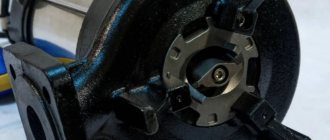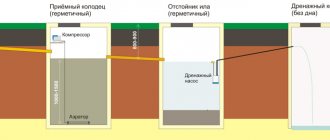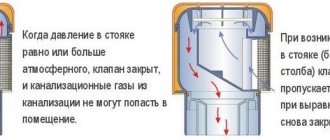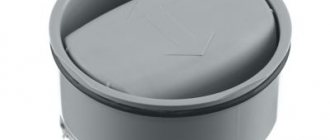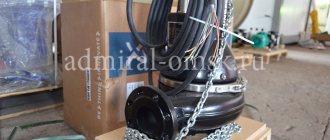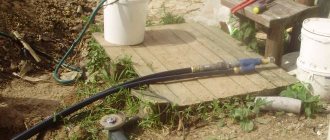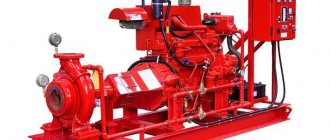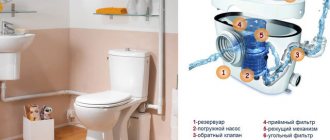Pumps are used to supply water to a home or water a garden. They come in different types and designs, and each of them has its own area of application. If you need an inexpensive and reliable device for pumping water from a well, deck or some kind of container, pay attention to a self-priming pump. These are relatively inexpensive devices that are installed on the surface and can pump water from a fairly decent depth - 8-9 m. If necessary, the models are supplemented with ejectors, then the suction depth increases to 20-35 m.
General classification
Currently, there are more than three thousand types of pumps. They differ in structure and purpose, and are also suitable for different areas of use. All this variety can be divided into two large groups: dynamic and positive displacement pumps.
Volumetric pumps are devices in which a substance moves due to a constant change in the volume of the chamber, while it is alternately combined with the inlet and outlet. They, in turn, can be divided into:
- membrane;
- rotary;
- piston
Dynamic are models in which water moves along with the chamber due to hydrodynamic forces, while there is a constant connection with the inlet and outlet pipes of the pump. Dynamic pumps are either jet or vane pumps, the latter in turn being divided into centrifugal, axial and vortex.
Below, all these types of pumps, as well as their classification, will be discussed in more detail.
Rotary devices
An overview of water pumps is opened by rotary devices. Their fundamental difference is the absence of a valve. In other words, a rotary water pump moves water by pushing it out. This process is carried out by a special working element - the rotor. This is implemented as follows: water enters the working chamber. The movement of the rotor along the inner walls of the working chamber forms a change in the volume of the enclosed space, and water is pushed out according to the laws of physics.
Advantages of rotary pumps:
- high efficiency;
- self-suction of water;
- Possibility of reverse water supply;
- pumping substances of any viscosity and temperature;
- low noise level;
- no vibration.
Of the minuses, it is worth noting that the purity of the pumped liquids must be ensured (without solid inclusions). In addition, the complex design requires expensive repairs.
Due to the ability to work with aggressive and viscous substances, rotary pumps are used in the chemical, oil, food, and marine industries. A subtype of rotary pumps - auger - is actively used in oil production. Another area of application is in public utilities, where they are used to maintain pressure in the heating system, while the pump does not require lubrication or cooling.
Advantages
The advantages of centrifugal pumps include the following characteristics:
- The pump has high efficiency.
- The unit is reliable during operation.
- Decent pressure and flow characteristics.
- Possibility of connecting several pumps in parallel or in series to one line.
- Self-priming ability.
- Ability to pump contaminated liquids.
- The ability of the pump to supply large volumes of pumped liquid.
- Affordable price.
- Easy to use.
- Easy to maintain.
- Large model range.
- Has a compact size.
- Low power consumption.
- Long service life.
Piston models
The piston pump design is based on mechanical displacement of water. This is one of the oldest types of water pumps, but in its modern form its design is much more complex than before. In particular, these pumps have an ergonomic and durable housing, a well-developed base of elements included in it, as well as flexible connection options to the water supply system. In this regard, they are widespread, both in industry and in everyday life.
The pump is a metal hollow cylinder, which, in fact, is a body - it moves liquid. The physical impact on it is carried out by a plunger-type piston, the operation of which can resemble a hydraulic press. The operation of this device is based on reciprocating movements. When moving upward (forward movement), a vacuum of air is created in the chamber, which ensures the suction of water. Water enters the chamber through an inlet with a valve, which at this moment opens the hole. During the return movement, this valve returns to its place and the outlet valve opens. At the same time, the piston squeezes out the water. The most common syringe works on almost the same principle.
There is one drawback to such work - the liquid flows unevenly. To eliminate this phenomenon, several pistons are used at once, which move at a certain frequency, which ensures an even flow.
There are double acting piston pumps. Here the valves are located on both sides, and water passes several times throughout the entire cylinder, that is, the piston, when moving, distils water inside the working space and pushes some of it out of the pump. Due to this, it was possible to reduce pulsation in the pipeline. The double-type design has a disadvantage - it is a more complex system, which makes it less reliable.
The main advantage of piston pumps is simplicity and durability, the main disadvantage is low productivity . In general, this type of pump can be made more efficient, but this does not make sense, since other types of pumps for pumping water can provide greater power at lower cost.
The scope of application of such pumping equipment is quite wide. They allow you to work not only with water, but also with aggressive chemical environments, as well as explosive mixtures. Due to the fact that such devices cannot pump large volumes of liquid, they are not used for large tasks. However, similar pumps are often found in the chemical industry. They can also be used to provide an autonomous water supply system for the home or for irrigation. Another place where such devices have proven themselves successfully is the food industry. This is explained by the fact that piston models are sensitive to the substances passed through them.
Equipment from Karcher and Vilo
German equipment is valued all over the world. These are good pumps with excellent performance and last a long time. The only drawback is the price. For example, SPP 33 Inox 1.645−409 costs 13,000 rubles.
Pumps from the Vilo brand used in everyday life are almost universal. The price is lower than its German counterpart , but the quality is identical. Millions of users of such equipment are convinced of this, whose messages can be seen on thematic forums and various websites.
When choosing a pump, such characteristics as pressure, power, service life, and quality are important. It is better to trust good domestic products. Buying a European pump is more expensive, but it does not always last long. It is important to pay attention to how the equipment will be installed and how well it will be maintained.
Membrane devices
A diaphragm pump is a relatively new type of equipment for pumping liquids and other substances. This type of equipment is capable of working with a gaseous medium and does this through a special membrane or diaphragm. It performs reciprocating movements and changes the volume of the working chamber with a given cyclicity.
The device design includes:
- membrane;
- working chamber;
- rod for connecting the diaphragm to the drive shaft;
- crank mechanism;
- valves to protect against backflow of substances;
- inlet and outlet pipe.
Such pumps may have one or two working chambers. Devices with one camera are more common, while devices with two are used in places where higher performance is required.
The work is carried out as follows: when starting, the rod bends the membrane, which increases the volume of the chamber and creates a vacuum effect in it. This phenomenon ensures the suction of the pumped medium. After filling the chamber, the rod returns the membrane to its place, the volume decreases sharply, and the substance is pushed out through the outlet pipe. At the same time, in order to prevent liquid or gas from getting back during the return movement, the inlet is automatically closed with a special valve.
There are models with two valves located parallel to each other. Here the process is carried out in a similar way, only there are two working chambers, and with each movement, water leaves one and enters the other. Such devices are considered more efficient.
Advantages of diaphragm pumps:
- can work with any environment;
- small size;
- quiet operation;
- no vibration;
- simplicity and reliability of design;
- energy efficiency;
- maintaining high purity of the pumped substance;
- low price;
- long service life;
- do not require special or frequent care, they do not need lubrication;
- a person without special education can replace damaged parts;
- have high versatility.
With such an abundance of advantages, no significant disadvantages were identified.
The diaphragm pump is widely used in medicine and pharmaceuticals, on farms (in milking machines). They are used for food production and in the nuclear sector. With their help, dosing pumps are made for use in the production of varnishes and paints; they are used in printing and in various places where there is a need to work with toxic and dangerous substances. It is safe to work with the latter, since diaphragm pumps have high tightness.
Jet pumps
Inkjet models are the simplest of all possible devices. They were created back in the 19th century, then they were used to pump water or air from medical test tubes, and later they began to be used in mines. Currently, the scope of application is even wider.
The design of the jet pump is very simple, thanks to which they practically do not require any maintenance . It consists of four parts: suction chamber, nozzle, diffuser and mixing tank. The entire operation of the device is based on the transfer of kinetic energy, and no mechanical force is used here. The jet pump has a vacuum chamber into which water is sucked. Then it moves through a special pipe, at the end of which there is a nozzle. By reducing the diameter, the flow speed increases; it enters the diffuser, and from it into the mixing chamber. Here water is mixed with the functional fluid, due to which the speed is reduced, but the pressure is maintained.
Jet pumps come in several types: ejector, injector, elevator.
- The ejector only pumps the substance. Works with water.
- The principle of operation of an injection pump is the injection of a substance. Used to pump out steam.
- Elevator is used to lower the temperature of the carrier, which is achieved by mixing with a functional liquid.
Thus, jet pumps are used to handle water, steam or gas. They can also act for mixing different substances or for lifting liquids (aerolift function).
This type of pump is common in various industries. They can be used separately or in combination with others. The simplicity of the design allows them to be used in emergency situations with water outages, as well as for fire extinguishing. They are also popular in air conditioning and sewage systems. Many jet-type models are sold with a variety of nozzles.
Pros:
- reliability;
- no need for constant maintenance;
- simple design;
- wide scope of application.
Minus - low efficiency (no more than 30%).
Centrifugal pumps
In this type of device, the main working element is the disk on which the blades are fixed. They are inclined in the direction opposite to the direction of movement. The blade is fixed on a shaft, which is driven by an electric motor. The design can use one or two wheels. In the second case, the blades connect them to each other.
The operating principle of a centrifugal pump is based on the fact that water enters the working chamber through the inlet pipe. The medium captured by the rotating blades begins to move with them. Centrifugal force moves water from the center of the wheel to the walls of the chamber, where increased pressure is created. Due to this, water is thrown out through the outlet. Due to the fact that the water is constantly moving, pumps of this type do not create pulsations in the water supply.
Using centrifugal pumps for domestic purposes allows you to perform various tasks. They are often used to extract water from a borehole or well. The water pumped out in this way can be used to arrange the water supply for the house, and can also be used for watering the site. Using centrifugal-type models, you can ensure the circulation of warm water in the heating system: due to the fact that the pumping centrifugal pump does not pulsate, air will not appear in the system. Various subtypes of such pumps can be used for pumping water from basements or swimming pools, for removing fecal matter, and also as drainage machines.
It is worth noting that simple pumps with a centrifugal system are designed for clean water without solid elements. Various subtypes allow you to work with contaminated environments.
Bends
Outlet is a part of the pump casing, which generally serves to collect the liquid medium leaving the channels of the pump impeller, convert the kinetic energy of the liquid into potential energy and supply the liquid to the next stage in a multistage pump or discharge it into the pressure pipeline. Bends are available in annular, spiral, and blade types, as well as composite ones.
The annular outlet consists of an annular channel with a constant or slightly increasing cross-sectional area (Fig. 28, a). Ring bends are used primarily in pumps pumping liquid with suspensions.
The spiral outlet is a channel with ever-increasing cross-sections and ending with a diffuser (Fig. 28, b). Such bends are most often used in single-stage pumps, but the possibility of their use in multi-stage pumps cannot be ruled out.
One of the main disadvantages of spiral bends is that in bends of this type, under off-design operating conditions, radial forces arise, leading to an increase in the deflection of the pump shaft in off-design mode. Thus, when the supply decreases, the spiral outlet acts as a diffuser, and when the supply increases, it acts as a confuser. In both cases, this leads to the fact that the velocity and pressure fields along the outlet section of the impeller cease to be axisymmetric.
To reduce the radial force, spiral bends are manufactured with a baffle. This type of bend is called a double spiral bend (Fig. 29).
A vane outlet (an outlet in the form of a guide vane) can be considered as a stationary circular grid located around the pump impeller and consisting of a series of channels formed by stationary blades. The vane outlet consists of two sections: an initial section with spiral channels and a final section with either diffuser channels (in a single-stage pump) or transfer channels (in a multi-stage pump).
Vane bends are used mainly in multistage pumps.
Large pumps sometimes use compound taps, consisting of a combination of a vane tap with either a volute tap or an annular tap.
The drainage has a significant impact on the efficiency of the pump. The more hydraulically perfect its channels are, the larger part of the dynamic pressure it converts into pressure. In this sense, spiral bends have an advantage over bladed bends; their channels compare favorably with the channels of bladed bends.
Axial models
In devices of this type, centrifugal forces are completely absent, and the entire process occurs through the transfer of kinetic energy. In the working chamber, which has a bend, the blades are on the axis. It is located in the direction of the flow. Water moves through the chamber, the axis increases its speed and pressure. Due to this design, the requirements for their production are quite serious. Most often, such pumps are used as a ballast and control system in ships, floating docks and similar equipment.
The main task of such pumps is to pump fresh and salt water. Used for drainage, supply and purification of water. Axial pumps can be very compact in size and installed inside the water supply.
Vortex pumps
Vortex pumps have a similar structure to centrifugal pumps, only in them the water supply is carried out in such a way that when water enters the chamber, it moves tangentially relative to the periphery and moves to the center of the wheel, from where, under pressure and due to the movement of the blades, it again goes to the periphery, and from there discharged through the outlet pipe. The main difference is that with one revolution of the wheel with blades (impeller), the cycle of suction and expulsion of water occurs many times.
This design allows you to increase the pressure by 7 times even with a small amount of water - this is the fundamental difference between vortex pumps and centrifugal pumps. Just like centrifugal pumps, these models do not tolerate solid inclusions in water, and also cannot work with viscous liquids. However, they can be used to pump gasoline, various liquids containing gas or air, and aggressive substances. The downside is low efficiency.
Such pumps are used for different purposes and areas, but their installation is advisable if the amount of substance that needs to be worked with is small, but high pressure is required at the outlet. Compared to centrifugal models, these devices are quieter, smaller and cheaper.
Frame
It is made in the shape of a spiral with a decreasing radius, similar to a snail shell. The cavity of this body does not remain the same throughout. The flow area increases as you approach the pressure pipe.
Where the volute casing ends and the discharge pipe begins there is a protruding wedge called a cutwater .
It physically separates the volute housing from the discharge port and ensures that fluid leaves the pump rather than simply spinning around in the volute housing.
The flared part of the volute casing is very important, because with the help of it the pump creates pressure.
Classification by food type
All water pumps have a certain method of power - from electricity or from liquid fuel. In the latter case, they are necessarily equipped with an internal combustion engine. A mixture of gasoline and oil or diesel fuel is used as liquid fuel.
Gasoline models are cheaper and quieter. Diesel devices are fueled with diesel fuel. They are more expensive, but the fuel is cheaper. In addition, they are noisier.
Liquid fuel pumps are otherwise called motor pumps. Their main advantage is ease of use and mobility, that is, they can be used anywhere if there is no electricity.
Electric models use alternating current to operate. The owner of such a pump does not need to worry about the availability of fuel, but care must be taken to ensure the constant availability of electricity, which is not always convenient.
Review of domestic products
Domestic manufacturers cannot boast of quality. An example would be the “Bison ZNVP-300−25”, popularly called “Rodnichok”. It is perfect for shallow wells - up to 5 meters. This vibration type pump can deliver 1400 l/h at a head of 60 meters. This is quite enough for home use.
Another simple model from the Russian one. It has similar characteristics to the previous model, but demonstrates low productivity - 700 liters per hour. 0.2 kW - this is its power, this explains the low productivity. The only good thing is the price: with the listed characteristics it does not exceed 1100 rubles. This is an excellent choice for those whose well is shallow (no deeper than 10 meters).
Classification by liquid quality
Different types of pumps have different requirements for water purity. All devices can be divided into three types.
- For clean water. The content of solid particles in it should not exceed 150 grams per cubic meter. These models include surface pumps, as well as well and borehole pumps.
- For moderately polluted water. Insoluble inclusions from 150 to 200 grams per cubic meter. Drainage, circulation and self-priming types. Also some fountain models.
- For dirty water. Solids from 200 grams per cubic meter. Drainage and surface sewerage models.
About water supply and its pressure
When planning to choose a liquid pump, you need to look at its parameters. All characteristics are important, but one of the key ones is the water flow rate. It is necessary to calculate how many cubic meters of water the home owner spends per hour to find out which option is suitable.
The next, no less important characteristic is pressure. It indicates with what force the unit will supply water. This parameter is calculated according to how far the water source is from the house. The pressure is lost under the influence of height and forks in the pipeline, so it is better to provide a small margin when calculating.
When looking for a model to use at home, the scope of choice narrows. There are deep and surface pumps. The first are used for wells less than 10 meters deep. They are fixed on a special platform.
The latter are suitable for use in wells and wells whose depth exceeds 10 meters. How the pump is controlled is important. It will be easiest for those whose choice falls on automatic control.
Classification by location
All pumps are also divided into submersible and external (the more common name is surface pumps). The first type is located directly in the water or partially in it. Models that are not completely submersible are called semi-submersible.
It is worth noting that there are several types of submersible pumps.
- Vibrating - here the work is based on an electromagnetic field and vibration of a special mechanism; these types of pumps require certain installation rules. In particular, there are strictly specified distances to the bottom.
- Centrifugal devices, which were discussed above.
All submersible pumps can have a motor that is already built into the housing, meaning it is underwater. For some models it is located on the surface.
The external pump is located directly next to the reservoir. In this case, the suction mechanism operates through a special hose. The further the pump is located from the water, the more powerful it should be.
Most often, surface pumps are used in dachas and suburban areas. They are highly economical and small in size, which makes them popular for home use. They can be equipped with automation, which makes them completely autonomous.
Advice! When using a remote ejector, you can extract water from an impressive depth.
Submersible pumps
Submersible pumps, among other things, are divided according to their purpose:
- borehole;
- wells;
- drainage;
- fecal.
Boreholes have an elongated shape and are used to extract water from wells. Compact dimensions allow it to be lowered into small-diameter wells, but production can be carried out from very great depths. They are distinguished by high operating power. Use only for lightly contaminated or completely clean water.
Wells are used to pump water from mines and wells. The main difference from borehole ones is their larger size and shallower immersion depth. They are quite powerful and can work with water containing silt, sand or clay. Quite quiet and does not vibrate.
The main task of drainage systems is to pump out contaminated water from basements, trenches, pits and other places. There are varieties with knives for chopping, as well as for working with lightly contaminated environments.
The fecal pump does not have significant differences from the drainage pumps, except that they are designed for heavily contaminated water with large solids (about 35 mm in diameter). They also have knives for grinding waste. Such pumps can be either submersible or external.
Surface pumps
The main difference between surface pumps is their location close to the water. They can be divided into several types:
- self-priming;
- automatic;
- pumping stations.
Self-priming pumps come in ejectorless and ejector types. In the first case, water is drawn in by the structure itself, in the second by creating a vacuum in the chamber. They are used for irrigation, delivery of drinking water or for domestic needs, as well as for collecting water from surface reservoirs (rivers, ponds). The water should be clean or slightly polluted.
Automatic pumps are provided with automation, which simplifies the process of use. There is no need to monitor the pump. Automatic pumps are powered by electricity. The machine itself can be installed directly in the model or as a separate system. The main task is to optimize use, as well as a protective function. For example, the device will stop working if the reservoir suddenly becomes shallow, the temperature of the pumped substance increases, or if there is a voltage drop in the network.
The pumping station consists of the pump itself, a check valve, a control system and a battery. Such a device has a rubber bulb installed inside a metal case. Water is pumped into the pear and air around it. A special sensor responds to changes in ambient pressure that occur as the bulb fills with water. When the pressure reaches its maximum, the sensor stops the water supply.
The ease of use of such units lies in their simplicity and functionality, the ability to be used during power outages. They can also provide water to several points at once.
Working wheel
There are 3 types of impellers:
- open,
- semi-closed
- closed
The simplest design is the open wheel, which consists of razor-sharp blades evenly spaced on a hub.
Open wheel
The large, unrestricted fluid supply allows this type of wheel to transport fluids containing dirt, dust, sediment, and solids , making them ideal for waste pumps.
It is used in water treatment plants where wastewater is pumped to treat coarse sludge with solid impurities. Therefore, it has cutting blades at the front of the wheel to cut very large impurities.
If the blades are placed on the back plate, then such a wheel is called semi-closed .
Semi-closed wheel
If the blades are between two plates, then it is called closed .
Closed wheel
Closed wheels are more efficient than semi-closed and open wheels. Because the fluid flow follows a strictly defined path. This means that more fluid comes out of the pump and less simply circulates inside the wheel.
Their disadvantage is that they can easily become contaminated with debris.
A very popular misconception is that swirling blades help push fluid. But that's not really what they're designed for.
The purpose of the blades is to guide the liquid along the smoothest path. Backward-twisted blades help stabilize fluid flow conditions at high speeds and reduce engine load.
By the way, read this article too: Oil centrifugal pumps, console NK and NKV
The correct direction of rotation for this wheel is counterclockwise . Therefore, by the direction of the bends of the blades, we can tell the direction of movement of the wheel.
